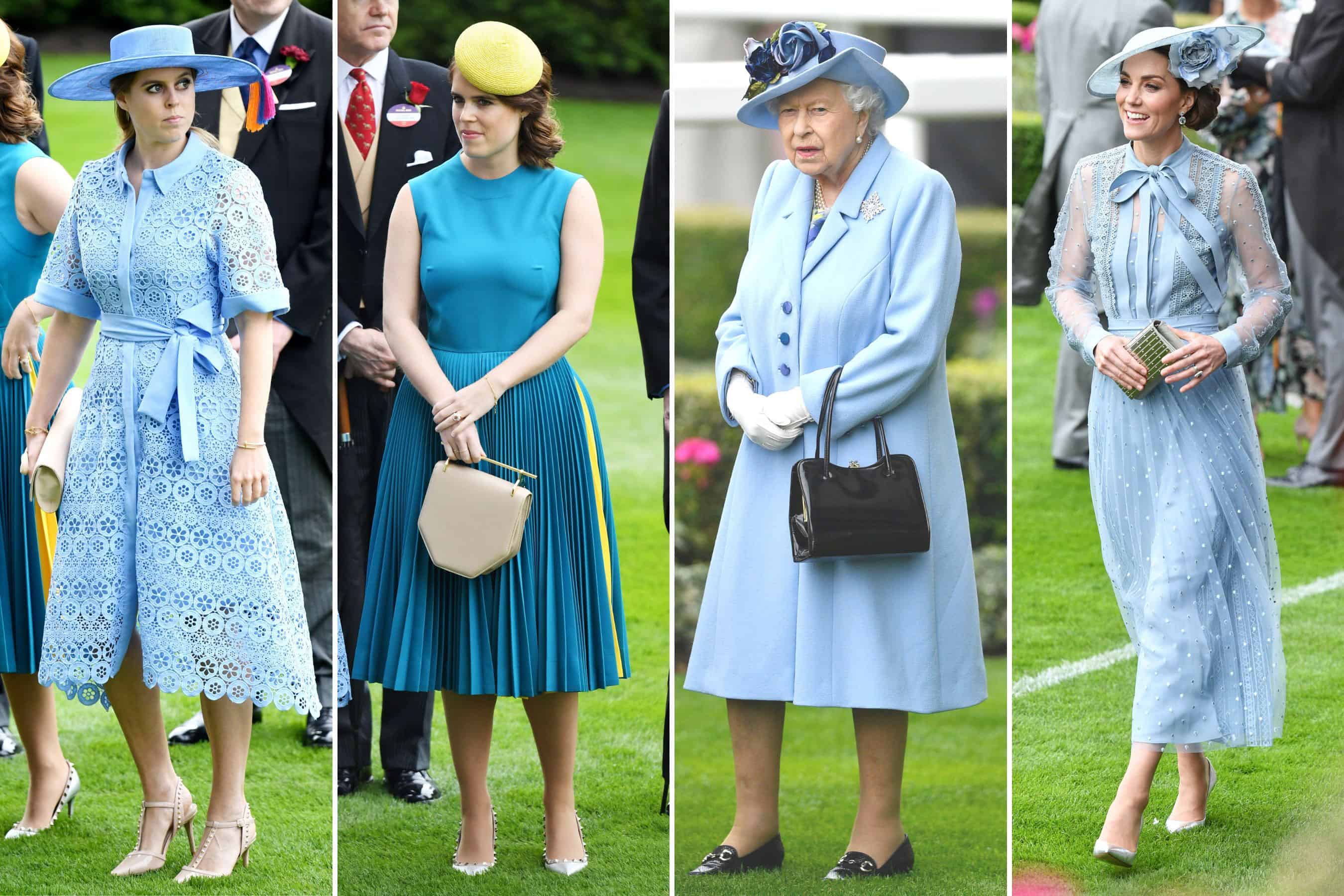
يبدو أن اللون الأزرق قد سعى على الألوان الأخرى في المناسبات الملكية في لندن فقد افتُتح الثلاثاء، سباق “رويال أسكوت” البريطاني الشهير بحضور الملكة إليزابيث الثانية، ويُشكّل هذا الحدث الذي يمتدّ على خمسة أيام مناسبة سنوية لاستعراض أجمل القبعات والأزياء، أما اللافت هذا العام فكان التوقيع العربي لأكثر إطلالات اليوم الأول أناقةً.
 كايت ميدلتون بإطلالة من إيلي صعب
كايت ميدلتون بإطلالة من إيلي صعبصاحبة الإطلالة الأجمل كانت دوقة كامبريدج كايت ميدلتون التي تألّقت للمرة الأولى بزيّ أزرق يحمل توقيع المصمم اللبناني إيلي صعب، وهي اختارت للمناسبة قميصاً من الدانتيل الأزرق تزيّنه عقدة عند العنق ونسّقته مع تنورة من التول مطرّزة بنقاط البولكا، هذه الإطلالة صُممت خصيصاً لكايت، وجاءت مستوحاة من تصميم قدّمه صعب ضمن مجموعته الخاصة برحلات 2019، وقد نسّقت كايت إطلالتها مع حقيبة فضيّة من Elie Saab، وحذاء “ستيليتو” باللون الفضي من Gianvito Rossi، وقبعة من تصميم Philip Treacy، وأقراط من Kiki McDonough.

اللون الأزرق لم يكن فقط خيار كايت بهذه المناسبة، بل شكّل أيضاً خيار الملكة إليزابيث التي ارتدت معطفاً وقبعةً باللون نفسه، وكان خيار حفيداتها: زارا فيليبس التي اختارت ثوباً مطبعاً بأزهار زرقاء من Zimmerman مع قبعة زرقاء،

بالإضافة إلى الأميرة أوجيني التي ارتدت ثوباً من الدانتيل الأزرق من Maje، وشقيقتها الأميرة بياتريس التي اختارت ثوباً أزرق مكسّر من Calvin Klein نسّقته مع قبعة صفراء.
 كايت وزارا فيليبس
كايت وزارا فيليبس أناقة الأزرق تطغى على الإطلالات
أناقة الأزرق تطغى على الإطلالات كايت والأمير ويليام
كايت والأمير ويليام الأميرتان أوجيني وبياتريس
الأميرتان أوجيني وبياتريس






